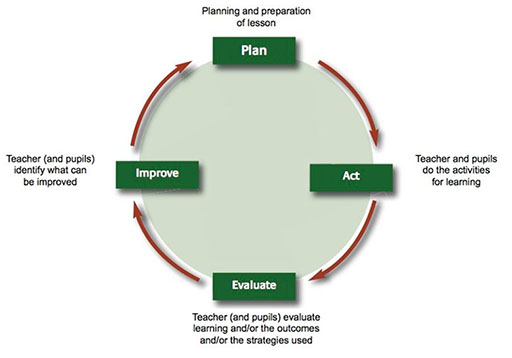6.2 Positive feedback
Nothing contributes more to success than success itself. This is what the following case study illustrates. Pupils that are recognised for their hard work will work even harder and strive to receive more recognition from the teacher. The feedback given by the teacher is very important to motivate pupils to do their very best.
Case study 10: The day Gilou got 10 out of 10 in arithmetic. His mother tells the story:
‘That day, Gilou came back from school. He was proudly holding his slate. On it were red markings: very good 10 out of 10.
He proudly told me: “Mom, I did my sums right! Look! I’ve got 10 out of 10.”
In this case, the teacher gave Gilou a score. And since Gilou got the maximum score, the teacher did not have to tell him what to do to improve his work. But let’s see how Jessica Osei, a teacher in Ghana, used the evaluation of the pupils’ work and her own reflection on this evaluation, not only to help her pupils progress but also to decide on strategies that would help to promote success.
Case study 11: Constructive feedback that will help improve the answers to a class test
Jessica Osei, a teacher in Ghana, was disappointed with her pupils’ performance in the assessment task. She reviewed their written responses and realised that many pupils had misunderstood the instructions.
In her next lesson, Jessica gave feedback to her pupils explaining that because they had not clearly read the instructions she wanted them to go through the assessment task and underline all the action words, for example, describe, explain, name and list.
The next time Jessica assessed her pupils’ learning, she gave her pupils time to read the whole task and underline all the action words before beginning the assessment.
Adapted from the TESSA handbook, Working with Pupils: A Guide for Teachers
Giving and receiving constructive feedback is a very important part of the assessment process. It is important for teachers to give pupils either written or oral feedback, explaining clearly what is good about their work, what is not so good, and how it could be improved. This provides the opportunity to give individual pupils personalised targets to enable them to progress and improve at their own pace according to his/her abilities and needs. This is what Dickinson and Wright name ‘differentiation by response’.
Concerning written comments on assessments, when teachers work with a large teacher–pupil ratio, creating a roster could be a solution. If a pupil has done something that surprises you because it is really good or not as good as usual, take time to analyse what may have happened so that he/she continues to produce quality work or try to improve.
Think of using the feedback given in previous sessions to do your lesson plan, the activities and the following assessments. Remember that making the learner participate in their evaluation will help in the learning process.
The figure below shows the integration of assessments in the learning process.
6.1 Formative assessment




